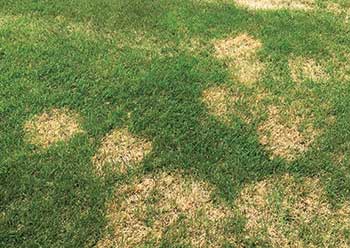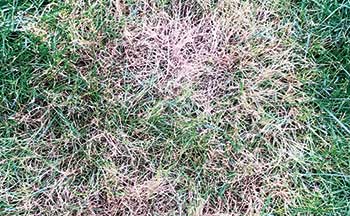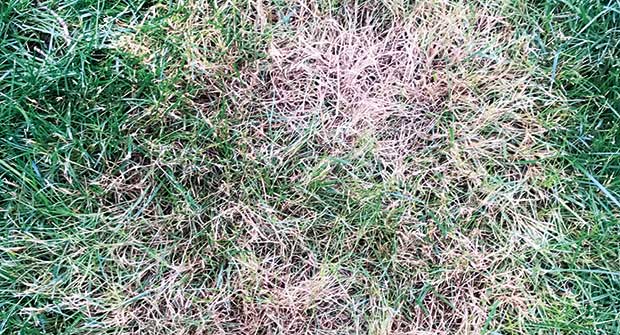
When a section of turf loses its lively green color, there are several possible reasons, including brown and large patch.
These diseases are caused by members of Rhizoctonia solani, and both cause circular, discolored patches of turf. Brown patch symptoms typically begin on cool-season turf like fescue, whereas large patch can be found on warm-season turf like centipedegrass.
Education is key
Located in the Transition Zone, Rodney Gaddis, owner of Spring-Green Lawn Care in Franklin, Tenn., says he mainly sees the disease on tall fescue.
The company has an annual revenue of $1.4 million and offers lawn care, tree/shrub care and pest control services. Its customers are 75 percent residential and 25 percent commercial. He also owns Gadco Lawn Care, which offers lawn maintenance services.
Most of the time, the brown or large patch is still small when his crews find it on their customers’ properties, Gaddis says. The patch normally has a brownish color where the tips of the grass are starting to turn brown. It may appear to be a pet urine spot at first.
“The main thing is to be proactive and identify the problem as quickly as you can, so it doesn’t eat down to the roots and kill the whole plant,” Gaddis says.
Some of the main causes of these diseases are improper mowing techniques and failing to aerate. It’s also important not to apply too much nitrogen to the turf as temperatures warm up.
“Education is the No. 1 way to prevent these diseases,” Gaddis says for both homeowners and professionals.

After identifying the disease, his company applies fungicide treatments to the infected turf in May and again every month until the pressure of the disease slows down, up to four treatments if necessary, Gaddis says.
He says it doesn’t matter if operators use granular or liquid fungicide, as long as they ensure the granular treatment is watered into the ground. If it’s later in the season, they may opt to aerate and rake up the dead area, instead of applying a fungicide.
Improve conditions
The temperature, humidity and moisture level are usually the main triggers for brown and large patch, says Patrick Beaman, owner of GrassMasters in Wilson, N.C.
“It doesn’t take too many of these afternoon thunderstorms for them to pop up overnight,” he says. “That’s why we use preventive treatments. If a client has had disease problems in the past, we can put them on a preventive program.”
The company, which has an annual revenue of $375,000, provides lawn maintenance and lawn care to 90 percent residential and 10 percent commercial clients.
Beaman looks for ways to improve the lawn’s air flow and drainage to suppress or eliminate the disease. If that doesn’t work, he will use fungicides to treat the area. His typical large patch program includes one spring and two fall applications, unless spring seems to linger, he says.
“It’s all about monitoring the conditions and being prepared for when the disease is going to start,” Beaman says.
Educating the homeowner also is an important part of his process. He sends out newsletters and email blasts when conditions are favorable for the diseases, so customers can watch for symptoms.
“I’m only there every five to six weeks,” Beaman says. “There are problems that could pop up during that time. If they start to see something that doesn’t look right, they can call me to come check it out. Once it shows up, you can stop it in its tracks, but you can’t make the brown turn green. It has to grow out.”


